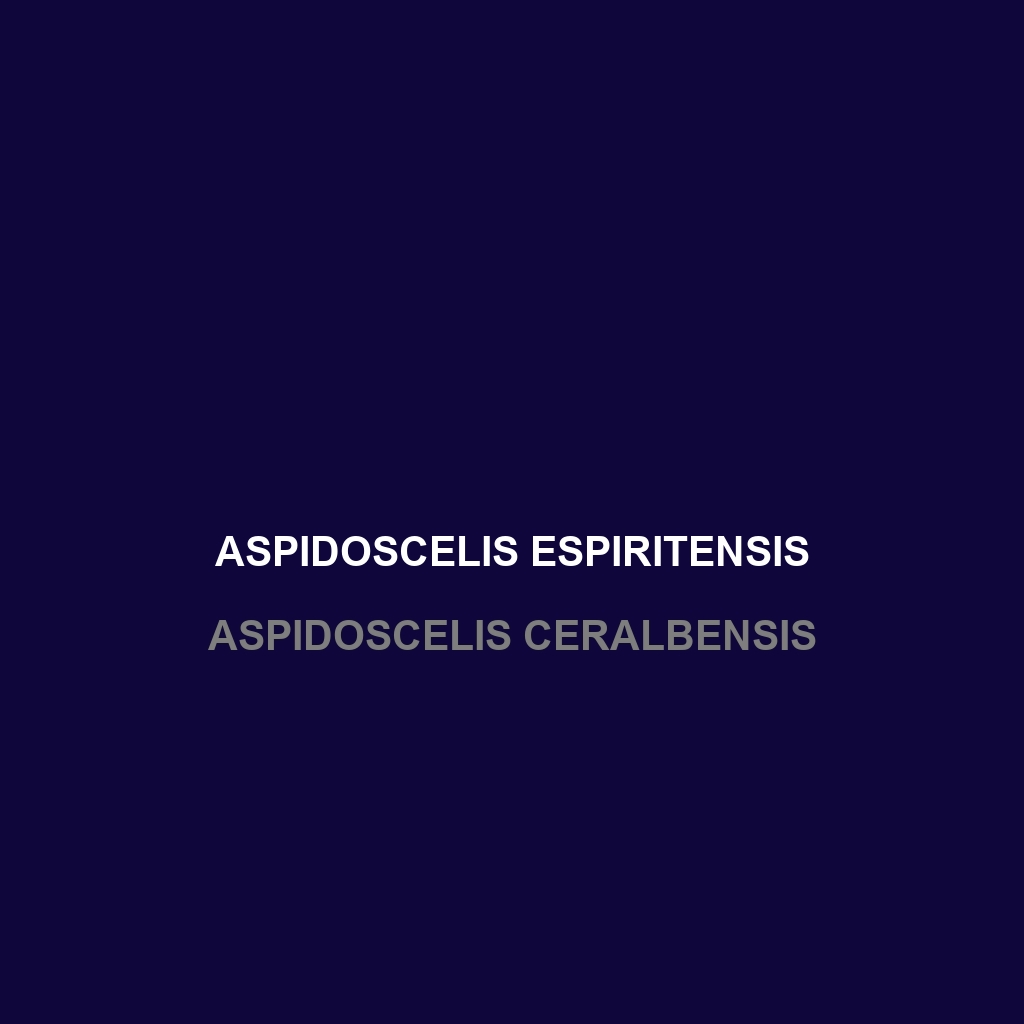
Tag: wildlife conservation
-

Aspidoscelis scalaris
Discover the western whiptail lizard (Aspidoscelis scalaris), a slender, agile reptile native to the arid deserts and grasslands of the southwestern United States and Mexico, known for its distinctive pale stripes and diet primarily consisting of insects. This species is active during the day, plays a crucial role in its ecosystem, and can reproduce parthenogenetically…
-

Aspidura brachyorrhos
Loading…
-

Aspidura brachyorrhos
Loading…
-

Aspidoscelis scalaris
Discover the western whiptail lizard (Aspidoscelis scalaris), a slender, agile reptile native to the arid deserts and grasslands of the southwestern United States and Mexico, known for its distinctive pale stripes and diet primarily consisting of insects. This species is active during the day, plays a crucial role in its ecosystem, and can reproduce parthenogenetically…
-

Aspidoscelis maximus
The Aspidoscelis maximus, or Great Plains Whiptail, is a medium-sized lizard known for its brownish-gray coloration and distinctive stripes, primarily found in the grasslands and deserts of the central and southwestern United States. This agile, diurnal species primarily feeds on insects and exhibits unique asexual reproduction through parthenogenesis.
-

Aspidoscelis costatus
Discover the Aspidoscelis costatus, commonly known as the stripped whiptail, a slender lizard measuring 15 to 20 inches, thriving in arid environments with characteristic longitudinal stripes and a diet primarily consisting of insects. This fascinating species is known for its unique parthenogenetic reproduction, contributing to ecosystem balance as both predator and prey.
-

Aspidoscelis labialis
Loading…
-

Asaccus griseonotus
Discover the Asaccus griseonotus, also known as the Persian Leaf-toed Gecko, a nocturnal species thriving in arid, rocky terrains of Iran. With its distinctive grey-brown coloration and flattened leaf-like tail, this agile insectivore plays a vital role in maintaining ecosystem balance while showcasing fascinating behaviors and adaptations.
-

Aspidoscelis deppii
Aspidoscelis deppii, commonly known as the Deppe’s Skink, is a diurnal lizard found in the arid regions of Mexico. It features a slender body, vibrant coloration, and plays a crucial role in regulating insect populations while facing threats from habitat loss.
-

Aspidomorphus lineaticollis
Introducing the Aspidomorphus lineaticollis, or striped snake, a medium-sized reptile native to the tropical forests and grasslands of Southeast Asia. Known for its distinctive dark brown or olive body adorned with lighter stripes, this nocturnal predator primarily feeds on small amphibians and lizards, playing a crucial role in its ecosystem.
Search
Popular Posts
-
Eunectes deschauenseei
Eunectes deschauenseei, also known as the Deschauensee’s Anaconda, is a semi-aquatic snake native to the Amazon Basin, known for its impressive size, reaching over 15 feet, and distinctive coloration that aids in camouflage. This fascinating predator plays a vital role in its ecosystem, helping regulate prey populations while exhibiting remarkable swimming abilities and strong maternal…
-
Eunectes beniensis
Common Name Eunectes beniensis Scientific Name Eunectes beniensis Habitat Eunectes beniensis, commonly known as the Bolivian anaconda, primarily inhabits the lush and diverse rainforests of Bolivia. These snakes thrive in a variety of wetland habitats including flooded forests, marshes, and slow-moving rivers. The region experiences a tropical climate characterized by high humidity and significant rainfall,…
Categories
Archives
Tags
animal adaptations (760) animal behavior (4726) animal reproduction (788) bat species (661) behavior (919) biodiversity (6982) conservation (1670) conservation efforts (1481) conservation status (4823) diet (2098) echolocation (822) ecological balance (1537) ecological role (1413) ecology (790) ecosystem (1468) ecosystem role (2661) ecosystem roles (663) endangered species (2391) environmental conservation (692) habitat (3246) habitat conservation (931) Habitat Destruction (1019) habitat loss (2978) insectivorous reptiles (688) IUCN Red List (1470) lizard reproduction (669) nocturnal animals (2699) nocturnal behavior (2259) physical characteristics (1987) reproduction (2856) reptile conservation (936) rodent (677) rodent species (1325) seed dispersal (2064) Seed Disperser (958) small mammals (1164) snake diet (680) snake reproduction (726) South America (789) species description (714) tropical forests (938) Vulnerable Species (4454) wildlife (2507) wildlife conservation (4573) wildlife protection (843)



